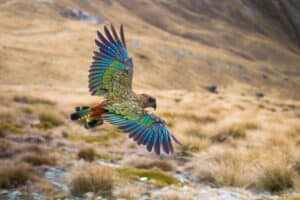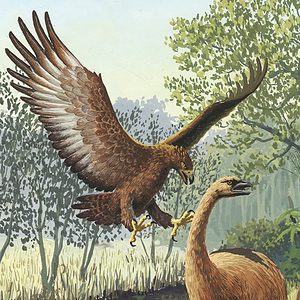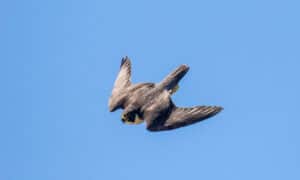Like humans, birds take time to pick out a safe, comfortable bed for their babies. They construct nests in different shapes with material from their environment, placing them in well-hidden areas away from danger and lining the insides with soft fur and plant matter. Each bird makes a nest unique to its species, and you can often tell the designer based on the shape, size, location, and materials used to construct the nest. Let’s discover seven different types of bird nests and learn about the birds that build them!
Cup Nest
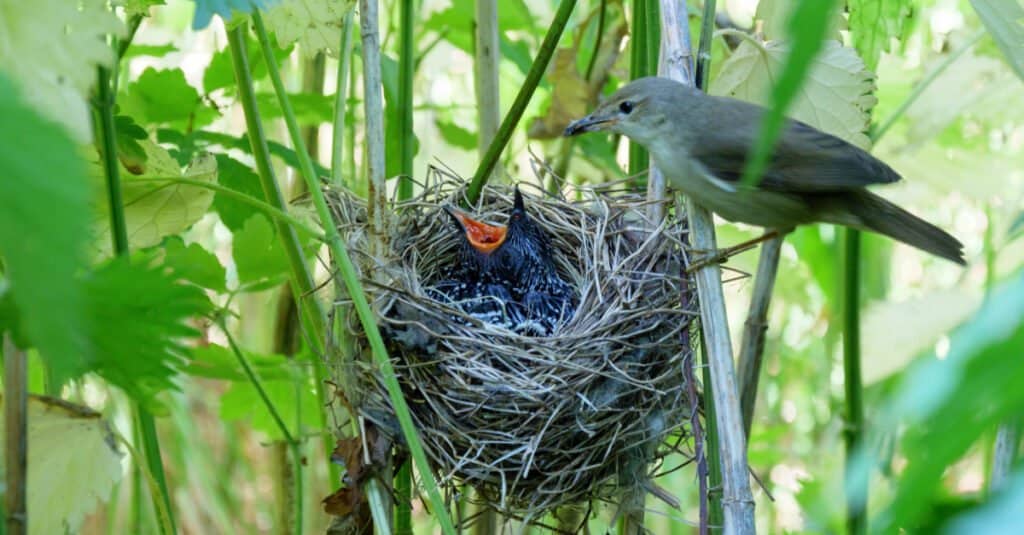
Cup nests are the most common form of nest in the bird world. They are often made with pliable grasses, weeds, and spider silk.
©Vishnevskiy Vasily/Shutterstock.com
The cup nest is one of the most common nest types in the bird world. Like blackbirds, warblers, and thrushes, many passerines construct cup-shaped nests. And a few non-passerines, such as hummingbirds and swifts, also create cups for nests. Most use pliable grasses and weeds as the base, but you will also find some made with mud and saliva. Additionally, birds like kinglets and New World warblers use spider silk to bind their materials and keep their nests tight and compact. You can find cup nests in trees, bushes, ledges, or even on the ground.
Platform Nest
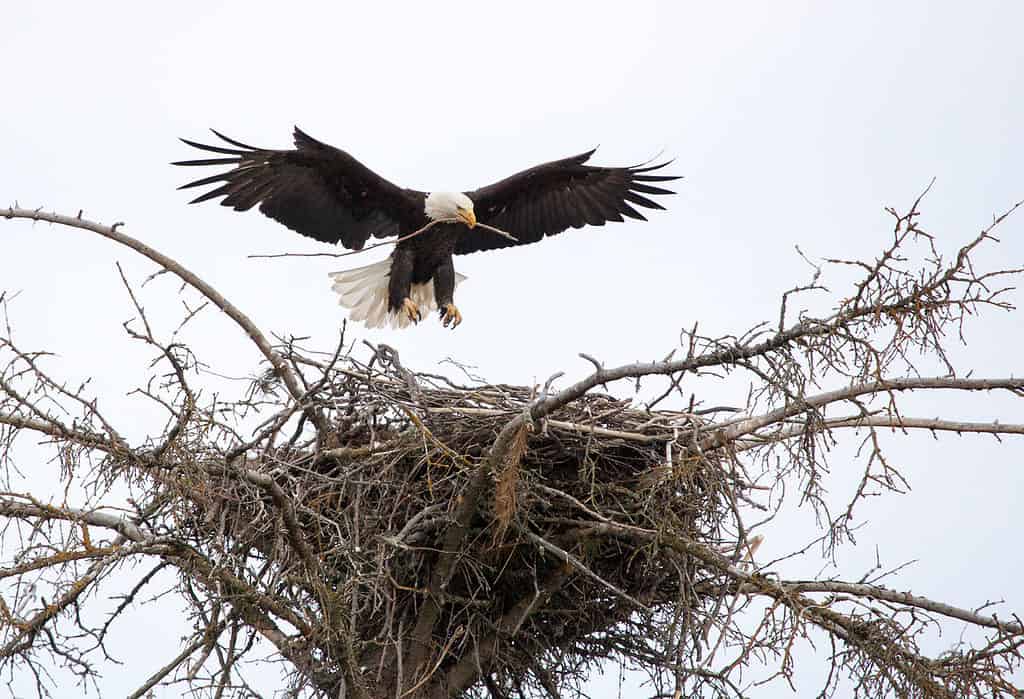
Birds like eagles, ospreys, and storks build large platform structures made with sticks and branches. They add new material each year.
©iStock.com/June Jacobsen
Platform nests are often very large structures made of layered sticks and branches with dirt and grass added for softness. Big birds, like eagles, ospreys, and storks, build platform structures so they can have a 360-degree view of their surroundings. They may place them on the ground or in elevated areas, such as tall trees, cliffs, and phone poles. Interestingly, the birds typically add new material to the same nest each breeding season, allowing the structure to grow larger each year. However, in some cases, the nest becomes too heavy and snaps a branch off a tree or damages power lines!
Burrow Nest
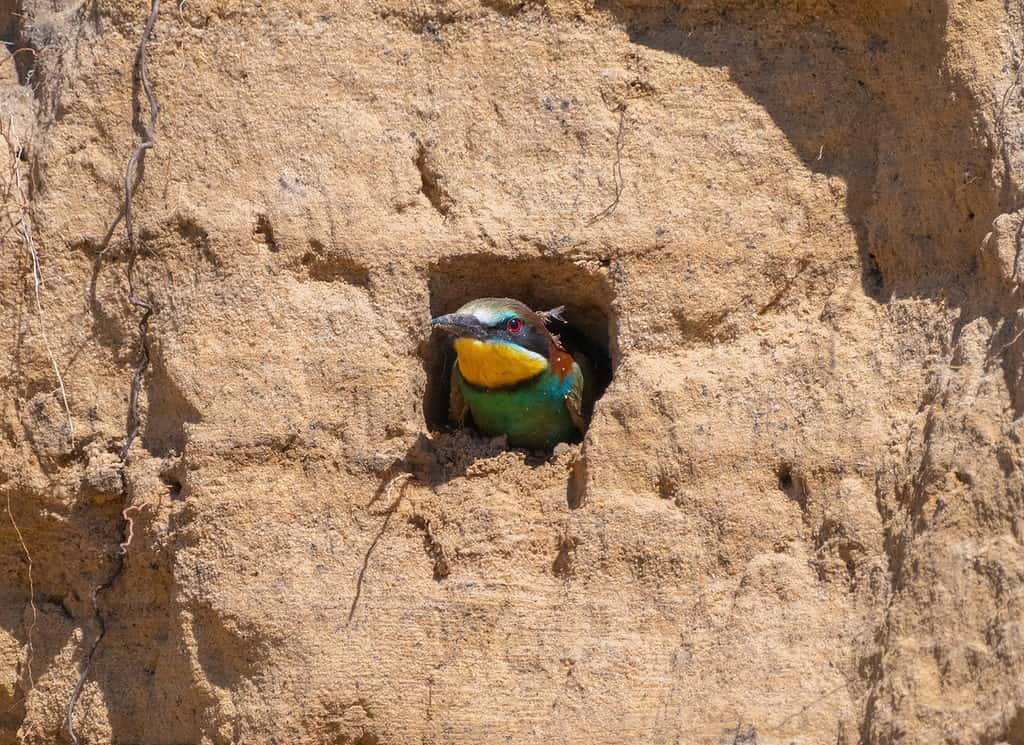
The European bee-eater is a burrowing bird that nests in colonies. It digs many tunnels in the side of a dirt cliff.
©iStock.com/Igor Klyakhin
Burrowing birds shelter their young under the earth. Many species of this nature dig horizontal tunnels into vertical dirt cliffs. But some birds, like the burrowing owl, dig holes directly into the ground. Many burrowing species, like sand martins, excavate their own tunnels and chambers. Others use rodent and mammal holes, such as the common kingfisher that takes over rabbit burrows. Some, like the European bee-eater, nest in colonies, with many tunnels leading to an inner chamber where the eggs are kept.
Scrape Nest
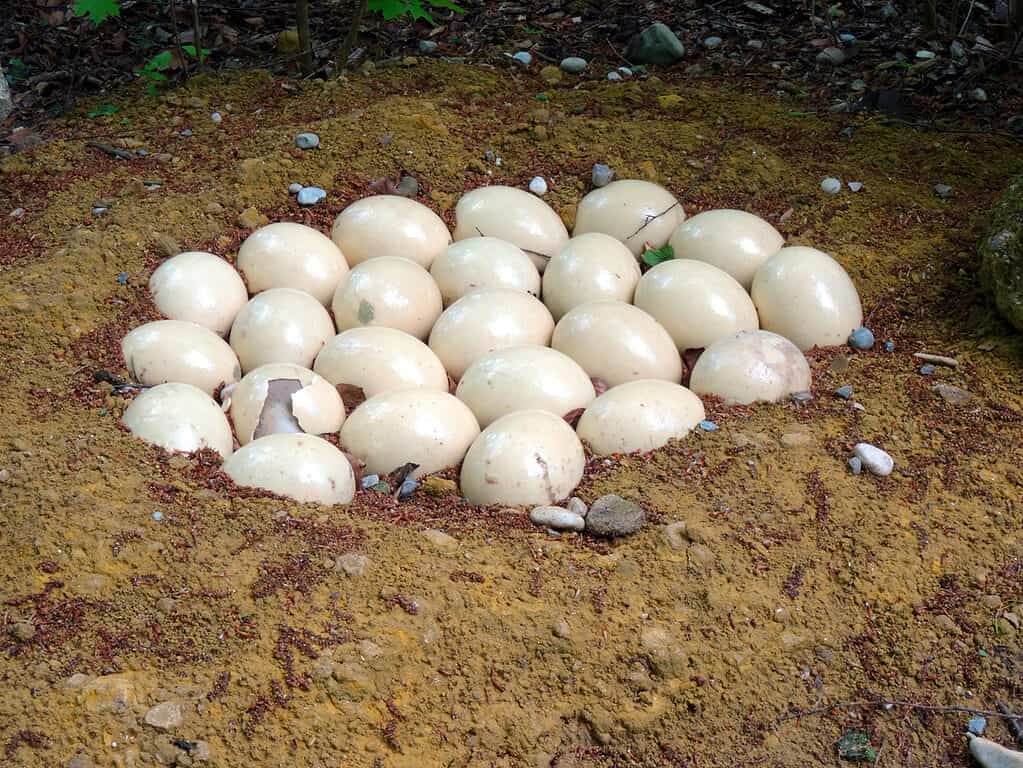
Ostriches lay their eggs in simple scrapes in the soil. However, these birds are vulnerable to nest predation.
©iStock.com/Nicki1982
The scrape is one of the simplest types of bird’s nest. They are shallow depressions in soil or vegetation, often lined with plant matter, shells, feathers, and small stones. As a matter of practicality, the scrape is deep enough to keep the eggs from rolling away. However, species that build these nests are vulnerable to nest predation. Ostriches, ducks, shorebirds, terns, pheasants, and buzzards are among some of the birds that construct these ground nests. In an attempt to ward off predators, many of these species use camouflage and distraction displays. Additionally, their young are precocial, leaving the nest shortly after hatching.
Mound Nest
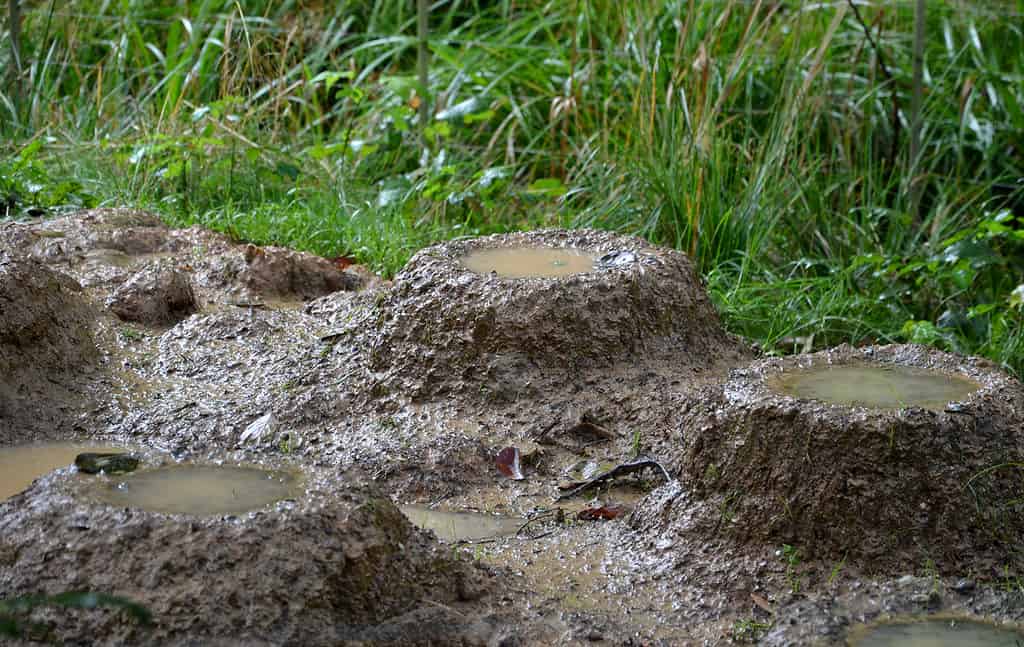
Flamingoes fashion a cone-shaped mud mound, which protects their eggs from fluctuating water levels and excessive heat.
©iStock.com/beekeepx
Mound nests are meant to bury the eggs under soil, mud, or even stones. Megapode species from Australia and Asia create an enormous rotting mass of soil, sticks, leaves, and other plant matter. Mounds are built on top of the pile, with the heat generated from the mass effectively incubating their eggs. Flamingoes fashion a cone-shaped mud mound, which protects their eggs from fluctuating water levels and excessive heat. The horned coot in South America uses stones to create a structure in shallow water. Once completed, they place an aquatic vegetation platform on top.
Cavity Nest
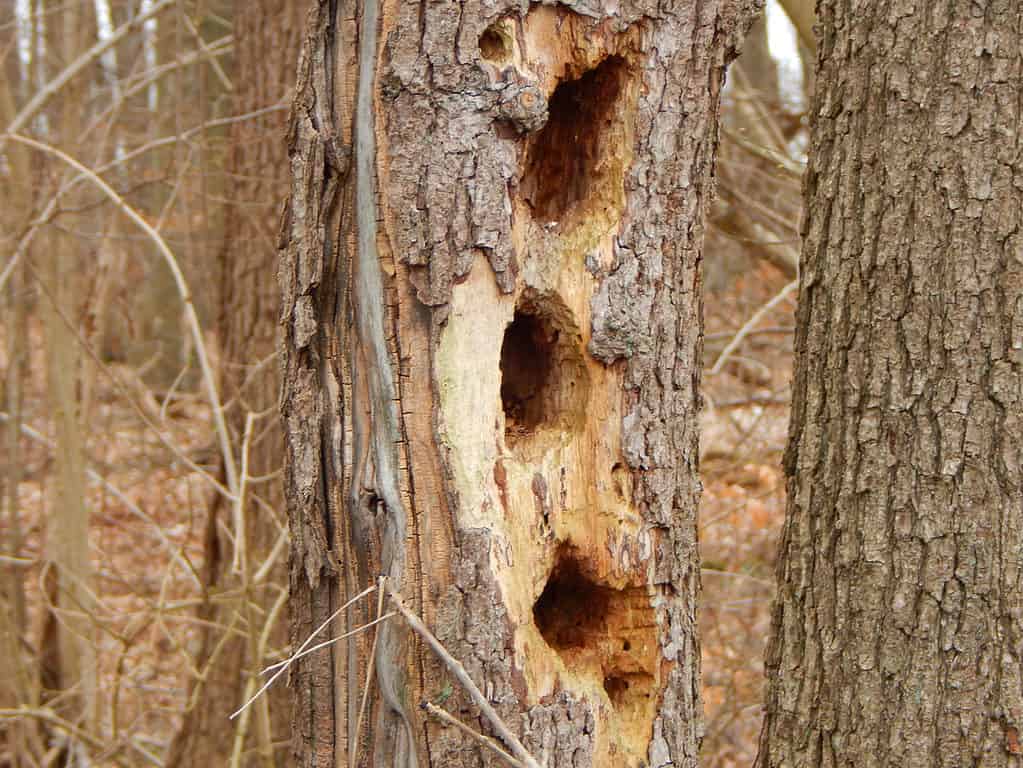
Only a few species, like woodpeckers and trogons, can excavate their own cavities. Most cavity dwellers use natural chambers.
©iStock.com/Kurt-Erik Goehner
Cavity nests are chambers in living or dead wood, or occasionally in insect nests. However, only a few species, like woodpeckers and trogons, can excavate their own cavities. Most cavity dwellers (owls, kingfishers, parrots, hornbills, etc.) use natural crevices or those previously excavated by other species. They usually line the insides of their holes with feathers or other soft material. If you want to attract cavity-nest users, you can do so easily by placing nest boxes aroud your property!
Hanging Nest
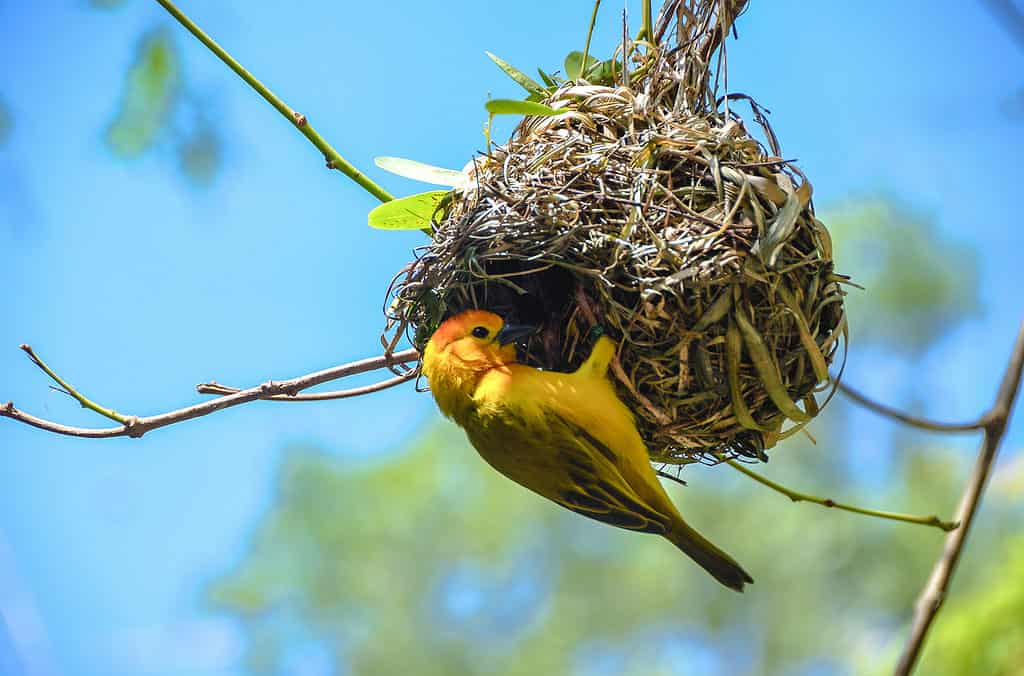
Weavers build hanging sacs made from grasses and other plant fiber. They anchor them to tree branches.
©iStock.com/thittaya itthithepphana
Hanging bird nests are elongated sacs woven with pliable material, like grasses and plant fiber. They are typically anchored to tree branches, with the fibers entwined around multiple branches to keep it from falling. Orioles, weavers, and sunbirds are among those that construct hanging nests.
The photo featured at the top of this post is © iStock.com/Syed F Abbas
Thank you for reading! Have some feedback for us? Contact the AZ Animals editorial team.



